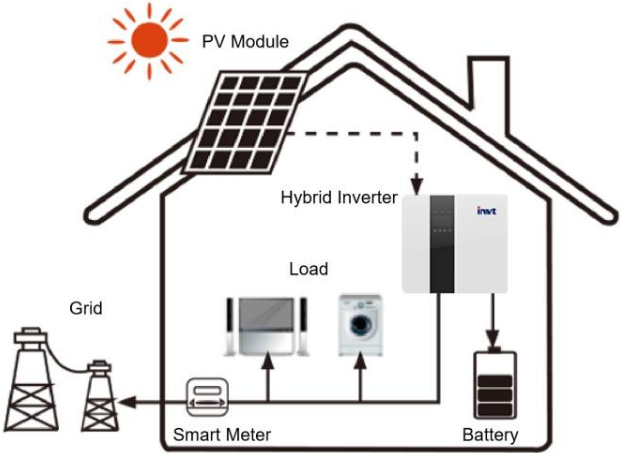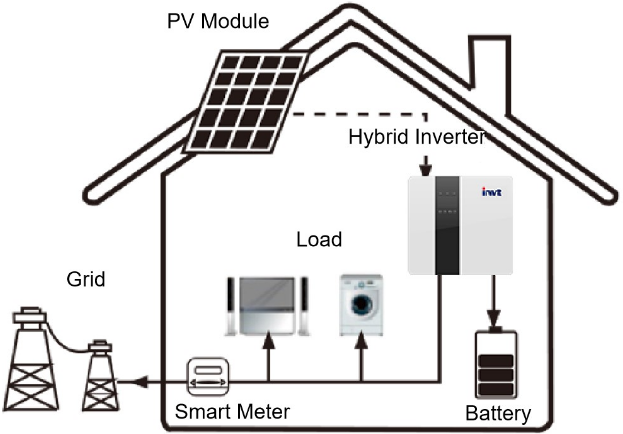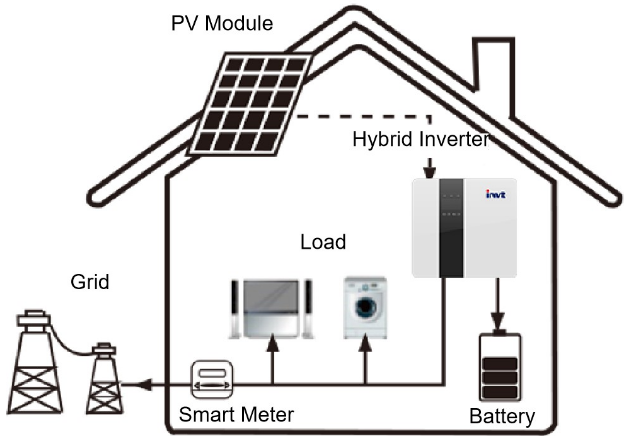
How to Choose the Right Operating Mode for an Energy Storage System?
How can the cost of energy use be minimized and efficiency optimized with multiple working modes of an energy storage system? How can a perfect balance be achieved between charging and discharging and between grid and PV? If you're looking for such questions, stop wondering.
Here, we'll offer you a complete guide on how to choose the right operating mode for an energy storage system. This is an important task as it directly affects your ROI and payback period. So, let's explore the working modes in various scenarios with the example of Innotinum inverter products.
Different Working Modes for Energy Storage Systems
One of the key advantages of modular Innotinum battery storage systems is their flexibility. Depending on the consumption, application, and existing power source, their energy storage system can be deployed as a solar source of power or allow smart load management features to assist in balancing power usage and demanding applications.
Here are the three different working modes for energy storage; use them according to your area's needs.
Working Mode 1: Self-Consumption
Self-consumption mode is best for those locations where the cost of grid-tied electricity is lower, and energy prices are higher. This model is explained as follows;
Load > Battery > Grid
The power produced by the PV will first be deployed to power local loads and then recharge the batteries, and then the excess power will be fed to the public grid. When there is a power outage, solar power is not adequate to fulfill the power demands of households. In such a scenario, the battery will discharge current to meet the household power load along with the solar power. And if the battery power is not enough, the power will be withdrawn from the grid.
But when there is adequate light, and the battery is fully charged, the solar modules provide power to the household load, and the rest of the energy is fed to the grid.
In terms of the grid, the overlap between load energy and photovoltaic power generation is high during the daytime. The enhanced proportion of local use of new energy minimizes the PV power feed-in and decreases the penetrated pressure of the local distribution network.
In terms of economics, this operational mode significantly lessens the amount of grid electricity acquired, lowers the price of household energy usage, and surges the application rate of PV, making it appropriate for household setups with high energy consumption and large tariff alterations.
Working Mode 2: Peak shaving
This mode is suitable for areas with peak and valley costs (time-sharing tariffs). Users can charge the battery using PV power and off-peak power.
Load>battery>grid (when discharging)
Charging and discharging time breaks can be set amenably, and you can also pick whether to charge from the grid or not. The benefits of this model are based on the installation region's time-of-use tariff time, which practically sets the charging and discharging time of the machine. The machine is put in storage when the charge is low and discharged when the price is high to supply the load, which is basically the peak-valley arbitrage profit model.
Working Mode 3: Standby mode
Battery > load > grid
It is suitable for areas with regular power outages. This mode ensures that the battery has an acceptable stock of energy when the grid is disconnected.
In this mode, the battery is effectively charged in set time zones and never discharged when the grid is on. It also permits the user to pick whether to charge from the grid or not.
Here are three general situations in the application of standby mode:
Rigid demand
Emergency power supply
Standalone system
- Rigid demand
Electricity-less areas such as Tibet in China, due to the more scattered population distribution, the ample grid power supply is more problematic, long-distance transmission deal, and low power quality; in Africa, South America, and Southeast Asia, the quality of the grid is not high and unbalanced, power generation supply is lacking, and power conveniences are relatively regressive, further growing the demand for backup power in the above areas.
- Emergency power supply
When the grid is shut down, the system will offer emergency power through PV or batteries to power the home load. A number of key demand situations follow.
Power grid outages triggered by repeated natural disasters, such as coastal areas, typhoons, earthquakes, mountain fires, and others, are relatively frequent, and the power supply is forced to be postponed, etc.
Power supply for necessary tools: primary or special load, which refers to uninterruptible tools or tools that can't be powered off for a longer time, such as oxygen supply gear, observing equipment, communication information processing equipment, financial and public security systems, etc. Its significance lies in the fact that once the power supply to these procedures is inadequate or the quality of the power supply is low, it may lead to significant misfortunes such as big property losses or risking personal safety.
- Standalone system
Off-grid PV+ ESS is generally used in areas that cannot be protected by the grid and are not appropriate to be attached to the power grid, such as remote mountain residents, border guards, outposts, islands, mobile monitoring stations, offshore ships, and other areas or scenarios.
Here are the operational modes that can be established to balance with the Innotinum inverter product series for multiple applications scenarios, which makes their energy storage systems trends to 1.
Bottom Line
In short, here we describe the three different operating modes for energy storage systems. Choose the one that fits your needs and the area's scenario. Further, sourcing energy storage solutions from a reliable and affordable supplier is significant for getting the highest ROI. So, choose Innotinum because of their cutting-edge technology and help to pick the proper operation mode for energy storage systems.



